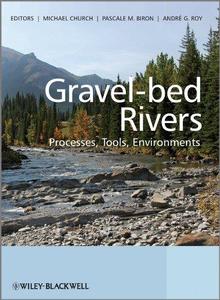
Gravel-Bed Rivers: Processes, Tools, Environments By
2012 | 585 Pages | ISBN: 0470688904 | PDF | 15 MB
Gravel-Bed Rivers: Processes, Tools, Environments presents a definitive review of current knowledge of gravel-bed rivers, derived from the 7th International Gravel-bed Rivers Workshop, the 5-yearly meeting of the world's leading authorities in the field. Each chapter in the book has been specifically commissioned to represent areas in which recent progress has been made in the field. The topics covered also represent a coherent progression through the principal areas of the subject (hydraulics; sediment transport; river morphology; tools and methods; applications of science).Definitive review of the current knowledge of gravel-bed rivers Coverage of both fundamental and applied topics Edited by leading academics with contributions from key researchers Thoroughly edited for quality and consistency to provide coherent and logical progression through the principal areas of the subject. Content: Chapter 1 Secondary Flows in Rivers: Theoretical Framework, Recent Advances, and Current Challenges (pages 1-22): Vladimir Nikora and Andre G. RoyChapter 2 Secondary Flows in Rivers: The Effect of Complex Geometry (pages 23-30): Bruce MacVicarChapter 3 Aspects of Secondary Flow in Open Channels: A Critical Literature Review (pages 31-35): Athanasios (Thanos) N. PapanicolaouChapter 4 Gravel Transport in Granular Perspective (pages 37-55): Philippe Frey and Michael ChurchChapter 5 On Gravel Exchange in Natural Channels (pages 56-67): Judith K. HaschenburgerChapter 6 Morphodynamics of Bars in Gravel?Bed Rivers: Bridging Analytical Models and Field Observations (pages 69-89): Guido Zolezzi, Walter Bertoldi and Marco TubinoChapter 7 Field Observations of Gravel?Bed River Morphodynamics: Perspectives and Critical Issues for Testing of Models (pages 90-95): Nicola SurianChapter 8 Morphodynamics of Bars in Gravel?Bed Rivers: Coupling Hydraulic Geometry and Analytical Models (pages 96-100): Robert G. MillarChapter 9 Modelling Sediment Transport and Morphodynamics of Gravel?Bed Rivers (pages 101-115): Erik MosselmanChapter 10 The Potential of Using High?Resolution Process Models to Inform Parameterizations of Morphodynamic Models (pages 116-122): Richard J. HardyChapter 11 The Importance of Off?Channel Sediment Storage in 1?D Morphodynamic Modelling (pages 123-134): J. Wesley LauerChapter 12 Stream Restoration in Gravel?Bed Rivers (pages 135-149): Peter R. WilcockChapter 13 River Restoration: Widening Perspectives (pages 150-159): Nicholas J. CliffordChapter 14 Restoring Geomorphic Resilience in Streams (pages 160-164): Noah P. SnyderChapter 15 The Geomorphic Response of Gravel?Bed Rivers to Dams: Perspectives and Prospects (pages 165-181): Gordon E. GrantChapter 16 Mitigating Downstream Effects of Dams (pages 182-189): David GaeumanChapter 17 River Geomorphology and Salmonid Habitat: Some Examples Illustrating their Complex Association, from Redd to Riverscape Scales (pages 191-215): Michel LapointeChapter 18 Incorporating Spatial Context into the Analysis of Salmonid-Habitat Relations (pages 216-224): Christian E. Torgersen, Colden V. Baxter, Joseph L. Ebersole and Robert E. GresswellChapter 19 Animals and the Geomorphology of Gravel?Bed Rivers (pages 225-241): Stephen P. Rice, Matthew F. Johnson and Ian ReidChapter 20 Geomorphology and Gravel?Bed River Ecosystem Services: Workshop Outcomes (pages 242-257): Normand Bergeron and Joanna EyquemChapter 21 Remote Sensing of the Hydraulic Environment in Gravel?Bed Rivers (pages 259-285): W. Andrew MarcusChapter 22 LiDAR and ADCP Use in Gravel?Bed Rivers: Advances Since GBR6 (pages 286-302): David J. Milan and George L. HeritageChapter 23 Remotely Sensed Topographic Change in Gravel Riverbeds with Flowing Channels (pages 303-314): D. Murray HicksChapter 24 Modern Digital Instruments and Techniques for Hydrodynamic and Morphologic Characterization of River Channels (pages 315-341): Marian Muste, Dongsu Kim and Venkatesh MerwadeChapter 25 Mapping Water and Sediment Flux Distributions in Gravel?Bed Rivers Using ADCPs (pages 342-350): Colin D. RennieChapter 26 Recent Advances in the Dynamics of Steep Channels (pages 351-377): Francesco Comiti and Luca MaoChapter 27 Examining Individual Step Stability within Step?Pool Sequences (pages 378-385): Joanna Crowe CurranChapter 28 Alluvial Steep Channels: Flow Resistance, Bedload Transport Prediction, and Transition to Debris Flows (pages 386-397): Dieter RickenmannChapter 29 Semi?Alluvial Channels and Sediment?Flux?Driven Bedrock Erosion (pages 399-418): Jens M. TurowskiChapter 30 Transport Capacity, Bedrock Exposure, and Process Domains (pages 419-423): Thomas E. LisleChapter 31 Nomenclature, Complexity, Semi?Alluvial Channels and Sediment?Flux?Driven Bedrock Erosion (pages 424-431): Lyubov V. Meshkova, Paul A. Carling and Thomas Buffin?BelangerChapter 32 Changes in Channel Morphology Over Human Time Scales (pages 433-463): John M. BuffingtonChapter 33 Channel Response and Recovery to Changes in Sediment Supply (pages 464-473): Marwan A. Hassan and Andre E. ZimmermannChapter 34 Alluvial Landscape Evolution: What Do We Know About Metamorphosis of Gravel?Bed Meandering and Braided Streams? (pages 474-501): Francois Metivier and Laurie BarrierChapter 35 Differences in Sediment Supply to Braided and Single?Thread River Channels: What Do the Data Tell Us? (pages 502-511): John Pitlick, Erich R. Mueller and Catalina SeguraChapter 36 Can We Link Cause and Effect in Landscape Evolution? (pages 512-522): Thomas J. Coulthard and Marco J. Van De WielChapter 37 River?Ice Effects on Gravel?Bed Channels (pages 523-540): Robert Ettema and Edward W. KempemaChapter 38 Is There a Northern Signature on Fluvial Form? (pages 541-545): James P. McNamaraChapter 39 Long?Term and Large?Scale River?Ice Processes in Cold?Region Watersheds (pages 546-554): Etienne Boucher, Yves Begin, Dominique Arseneault and Taha B. M. J. Ouarda
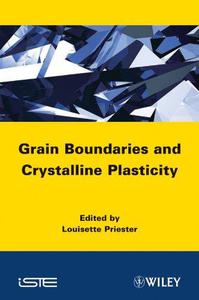
Grain Boundaries and Crystalline Plasticity By
2011 | 348 Pages | ISBN: 1848213271 | PDF | 32 MB
This book explores the fundamental role of grain boundaries in the plasticity of crystalline materials, providing a multi-scale approach to plasticity to facilitate understanding. It starts with the atomic description of a grain boundary, moves on to the elemental interaction processes between dislocations and grain boundaries, and finally shows how the microscopic phenomena influence the macroscopic behaviors and constitutive laws. Drawing on topics from physical, chemical, and mechanical disciplines, this work also explains properties of deformation at low and high temperature, creep, fatigue, and rupture.Content: Chapter 1 Grain Boundary Structures and Defects (pages 1-46): Chapter 2 Elementary Grain Boundary Deformation Mechanisms (pages 47-107): Chapter 3 Grain Boundaries in Cold Deformation (pages 109-163): Chapter 4 Creep and High Temperature Plasticity (pages 165-215): Chapter 5 Intergranular Fatigue (pages 217-280): Chapter 6 Intergranular Segregation and Crystalline Material Fracture (pages 281-325): Chapter 1 Bicrystallography and Topological Characterization of Interfacial Defects (pages 327-332): Chapter 2 Appendices of Chapter 3 (pages 333-339):
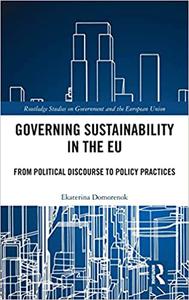
Ekaterina Domorenok, "Governing Sustainability in the EU: From Political Discourse to Policy Practices "
English | ISBN: 113823155X | 2018 | 190 pages | EPUB | 1196 KB
Governing Sustainability in the EU examines the recent novelties in the EU agenda for sustainable development, illustrating how the process of policy change has occurred at different levels, comprising general priorities, specific objectives and policy instruments.

Lester Faigley, Jack Selzer, "Good Reasons with Contemporary Arguments"
English | 2017 | pages: 559 | ISBN: 0134392876 | PDF | 19,6 mb
Good Reasons with Contemporary Arguments [RENTAL EDITION]
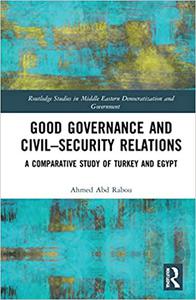
Ahmed Abd Rabou, "Good Governance and Civil-Security Relations: A Comparative Study of Turkey and Egypt "
English | ISBN: 0367445247 | 2020 | 186 pages | EPUB | 1186 KB
Developing the traditional civil-military relations approach to include security actors, the book compares the style of civil-security relations in both Egypt and Turkey. The volume comprehends the competition between civilian actors and military and security actors to impose control over the political regimes in transition and how this is related to the issue of good governance and democratization.
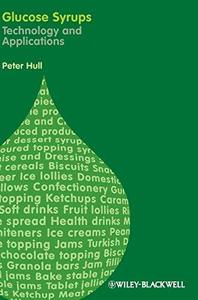
Glucose Syrups: Technology and Applications By Peter Hull(auth.)
2010 | 375 Pages | ISBN: 1405175567 | PDF | 6 MB
Glucose syrups (commonly known as corn syrups in North America) are derived from starch sources such as maize, wheat and potatoes. Offering alternative functional properties to sugar as well as economic benefits, glucose syrups are extremely versatile sweeteners, and are widely used in food manufacturing and other industries. They are a key ingredient in confectionery products, beer, soft drinks, sports drinks, jams, sauces and ice creams, as well as in pharmaceuticals and industrial fermentations. This book brings together all the relevant information on the manufacture and use of glucose syrups. Drawing on forty years' experience in the international glucose industry, the author provides a valuable reference for all those involved in the processing and buying of these syrups, and for scientists involved in the manufacture of a full range of food (and some non-food) products in which the syrups are ingredients. The emphasis is on practical information - recipes are included where relevant in the applications chapters, and appendices offer commonly-used calculations and useful data. Food technologists can use the book to make choices about the most suitable glucose syrup to use in a particular application, and also to adapt recipes in order to replace sugar (sucrose) or other ingredients. A glossary of terms reflecting the international terminology of the industry completes the book. Content: Chapter 1 History of Glucose Syrups (pages 1-7): Chapter 2 Fructose Containing Syrups (pages 9-17): Chapter 3 Glucose Syrup Manufacture (pages 19-44): Chapter 4 Explanation of Glucose Syrup Specifications (pages 45-60): Chapter 5 Application Properties of Glucose Syrups (pages 61-75): Chapter 6 Syrup Applications: an Overview (pages 77-100): Chapter 7 Trehalose (pages 101-106): Chapter 8 Sugar Alcohols: an Overview (pages 107-117): Chapter 9 Glucose Syrups in Baking and Biscuit Products (pages 119-132): Chapter 10 Glucose Syrups in Brewing (pages 133-148): Chapter 11 Glucose Syrups in Confectionery (pages 149-173): Chapter 12 Glucose Syrups in Fermentations: an Overview (pages 175-184): Chapter 13 Glucose Syrups in Ice Creams and Similar Products (pages 185-202): Chapter 14 Glucose Syrups in Jams (pages 203-219): Chapter 15 Glucose Syrups in Tomato Products and other Types of Dressings and Sauces (pages 221-226): Chapter 16 Glucose Syrups in Soft Drinks (pages 227-238): Chapter 17 Glucose Syrups in Health and Sports Drinks (pages 239-249): Chapter 18 Carbohydrate Metabolism and Caloric Values (pages 251-260): Chapter 19 Caramel - the Colouring (pages 261-263):

Globale Optimierung von Niveaulinien: Geometrische und algebraische Fundierung und Algorithmen By Ludwig Stammler, Edeltraud Buchsteiner?Kie?ling(auth.)
1996 | 229 Pages | ISBN: 3527402675 | PDF | 6 MB
Content: Chapter 1 Zielstellung dieses Buches (pages 1-6): Chapter 2 Niveaulinien in einem einzelnen Rasterquadrat (pages 7-55): Chapter 3 Gewinnung eines globalen Niveaulinienbildes (pages 56-98): Chapter 4 Varianten globaler optischer Verbesserung (pages 99-125): Chapter 5 Varianten im Arbeiten mit Genauigkeitsschranken (pages 126-131): Chapter 6 Angaben zum Pascal?Programm (pages 132-216):
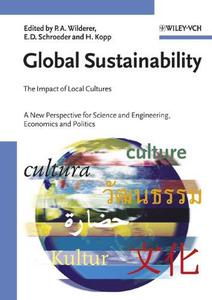
Global Sustainability: The Impact of Local Cultures By
2004 | 264 Pages | ISBN: 3527312366 | PDF | 4 MB
This first book to focus on cultural diversity as a key element of sustainable development in the context of science and engineering provides cross-disciplinary information and assistance in understanding our world in transition. As such, it furnishes the global scientific community and decision makers in governmental and non-governmental institutions as well as in industry with much-needed information on how the various factors affecting sustainable development -- including culture -- depend on and interfere with each other. Featuring a contribution by the President of the Club of Rome, HRH Prince El Hassan bin Talal, this is vital reading for all (natural) scientists, engineers, economists, ecologists, environmental organizations, and consultants.Content: Chapter 1 History and Mandate of Sustainability: From Local Forestry to Global Policy (pages 5-19): Prof. Dr. Gabriele Weber?Blaschke, Prof. Dr. Reinhard Mosandl and Prof. Dr. Martin FaulstichChapter 2 Sustainable Development: Exploring the Cross?Cultural Dimension (pages 21-41): Prof. Dr. Ortwin RennChapter 3 Sustainable Development and Cultural Diversity (pages 43-51): Prof. Dr. Hartmann LiebetruthChapter 4 Technological Progress in Different Cultures and Periods: Historical Evolution Projected into the Future (pages 53-64): Prof. Dr. Raoul WeilerChapter 5 Views of Sustainability: Elements of a Synthesis (pages 65-85): Dr. Dimitris KyriakouChapter 6 A New Way of Thinking about Sustainability, Risk and Environmental Decision?Making (pages 87-93): Prof. Dr. William E. Kastenberg, Gloria Hauser?Kastenberg and Dr. David NorrisChapter 7 Humility and Establishing the Sustainable Environment (pages 95-106): Prof. Dr. Edward D. SchroederChapter 8 Conflicts and Conflict?Solving as Chances to Make the Concept of Sustainable Development Work (pages 107-122): Prof. Dr. Armin GrunwaldChapter 9 Sustainability through Science?Technology?Society Education (pages 123-130): Prof. Dr. David Devraj KumarChapter 10 Sustainability and Consumption of Raw Materials in Germany (pages 131-140): Prof. Dr. Werner SchenkelChapter 11 Sustainability, Culture and Regional Scales: Some Remarks from Human Geography (pages 141-145): Prof. Dr. Horst KoppChapter 12 Sustainable Development in Asia: Traditional Ideas and Irreversible Processes (pages 147-155): Prof. Dr. Dietmar RothermundChapter 13 Sustainability of Development and Valuation of Non?renewable Resources: An Analysis in the Context of Local Cultures (pages 157-169): Prof. Dr. Michael von Hauff and Prof. Dr. Amitabh KunduChapter 14 Sustainability in Latin American Countries: Challenge and Opportunities for Argentina (pages 171-185): Prof. Dr. Monica RennerChapter 15 On the Roles Engineers May Play in the Attempt to Meet Basic Demands of Man and Nature (pages 187-199): Prof. i. R. Dr.?Ing. Dr. h. c. Peter A. Wilderer and Mirka C. WildererChapter 16 Integrating Cultural Aspects in the Implementation of Large Water Projects (pages 201-219): Dipl.?Ing Martin GrambowChapter 17 Sustainability from an Entrepreneurial Point of View Seen from the Particular Standpoint of a Company Active in the Water Industry (pages 221-226): Dipl.?Ing. Hans G. HuberChapter 18 Synthesis (pages 227-231): Prof. i. R. Dr.?Ing. Dr. h. c. Peter A. Wilderer, Prof. Dr. Edward D. Schroeder and Prof. Dr. Josef Bugl
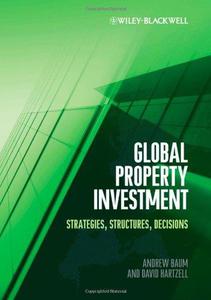
Global Property Investment: Strategies, Structures, Decisions By Andrew Baum, David Hartzell(auth.)
2012 | 568 Pages | ISBN: 1444361953 | PDF | 4 MB
Developments in the sophistication of global real estate markets mean that global real estate investment is now being executed professionally. Thanks to academic enquiry, professional analysis and entrepreneurial activity, backed by the globalisation of all investment activity, there is now an available body of material which forms the basis of this scholarly but practical summary of the new state of this art. The measurement, benchmarking, forecasting and quantitative management techniques applied to property investments are now compatible with those used in other asset classes, and advances in property research have at last put the ongoing debate about the role of real estate onto a footing of solid evidence. The truly global scope and authorship of this book is unique, and both authors here are singularly well qualified to summarise the impact and likely future of global innovations in property research and fund management. Between them, they have experienced three real estate crashes, and have observed at first hand the creation of the real estate debt and equity instruments that led to the global crisis of 2008-9. Global Property Investment: strategies, structure, decisions offers a unique perspective of the international real estate investment industry with: a close focus on solutions to real life investment problems no excessive theoretical paddinga target of both students and professionalshighly qualified dual-nationality authorshipWith many cases, problems and solutions presented throughout the book, and a companion website used for deeper analysis and slides presentations (see below), this is a key text for higher-level real estate students on BSc, MSc, MPhil and MBA courses worldwide as well as for practising property professionals worldwide in fund management, investment and asset management, banking and real estate advisory firms. Content: Chapter 1 Real Estate - The Global Asset (pages 1-31): Chapter 2 Global Property Markets and Real Estate Cycles (pages 32-93): Chapter 3 Market Fundamentals and Rent (pages 94-116): Chapter 4 Asset Pricing, Portfolio Theory and Real Estate (pages 117-153): Chapter 5 Basic Valuation and Investment Analysis (pages 155-170): Chapter 6 Leasing (pages 171-202): Chapter 7 Valuing Commercial Real Estate: The Unleveraged Case (pages 203-221): Chapter 8 Mortgages: An Introduction (pages 222-247): Chapter 9 Commercial Mortgage Underwriting and Leveraged Feasibility Analysis (pages 248-273): Chapter 10 Valuing the Private Real Estate Entity (pages 274-291): Chapter 11 Unlisted Real Estate Funds (pages 293-318): Chapter 12 Public Equity Real Estate (pages 319-339): Chapter 13 Real Estate Debt Markets (pages 340-377): Chapter 14 Real Estate Derivatives (pages 378-405): Chapter 15 International Real Estate Investment: Issues (pages 407-439): Chapter 16 Building the Global Portfolio (pages 440-474): Chapter 17 Performance Measurement and Attribution (pages 475-519): Chapter 18 Conclusions (pages 520-525):
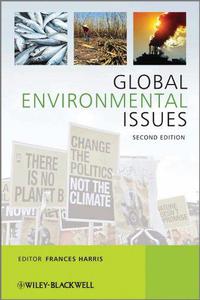
Global Environmental Issues, Second Edition By
2012 | 342 Pages | ISBN: 0470684704 | PDF | 5 MB
Global Environmental Issues, second edition builds on the popularity of the first edition, viewing global environmental problems as complex issues with a network of causes, influenced by a range of actors with differing priorities. The book recognises that science underpins much of what happens in society and therefore it is important to be able to interpret the environmental and social consequences of scientific developments. In addition to discussing the main biophysical causes, the book illustrates how socio-economic and political factors determine why and how people use land, resources and technology, and how this in turn affects natural resource management. This edition includes new chapters on the politics of science, International environmental regulation and treaties, environmental issues in a globalised world and natural resource management. Global Environmental Issues, second edition is essential reading for upper level undergraduates and Masters students within departments of Environmental Science and Geography. Includes case studies from around the world to provide a real life context for the issues tackled in each chapter Considers both the results of human actions and natural environmental change in order to provide balanced, in-depth debate Includes coverage of contemporary 'hot topics' such as biodiversity, globalization and sustainable development Chapters authored by experts in the field Includes new chapters on The politics of science, International environmental regulation and treaties , Environmental issues in a globalised world and Natural Resource Management Expanded sections include negotiating multilateral environmental agreements, GM crops, biofuels and marine and freshwater resources Content: Chapter 1 Human-Environment Interactions (pages 1-18): Frances HarrisChapter 2 From Science to Policy (pages 19-38): Frances HarrisChapter 3 Confronting a Multitude of Multilateral Environmental Agreements (pages 39-61): Anilla CherianChapter 4 Grappling with the Global Climate Challenge (pages 63-86): Anilla CherianChapter 5 Understanding and Adapting to Sea?Level Rise (pages 87-104): Patrick D. NunnChapter 6 Conserving Biodiversity and Natural Resources (pages 105-130): Frances HarrisChapter 7 Food Production and Supply (pages 131-165): Guy M. Robinson and Frances HarrisChapter 8 Meeting Society's Demand for Energy (pages 167-200): Nick PetfordChapter 9 Sustainable Urbanisation (pages 201-235): Kenneth LynchChapter 10 Coping with Pollution: Dealing with Waste (pages 237-273): Ros TaylorChapter 11 Sustainable Development: Negotiating the Future (pages 275-294): Frances Harris


